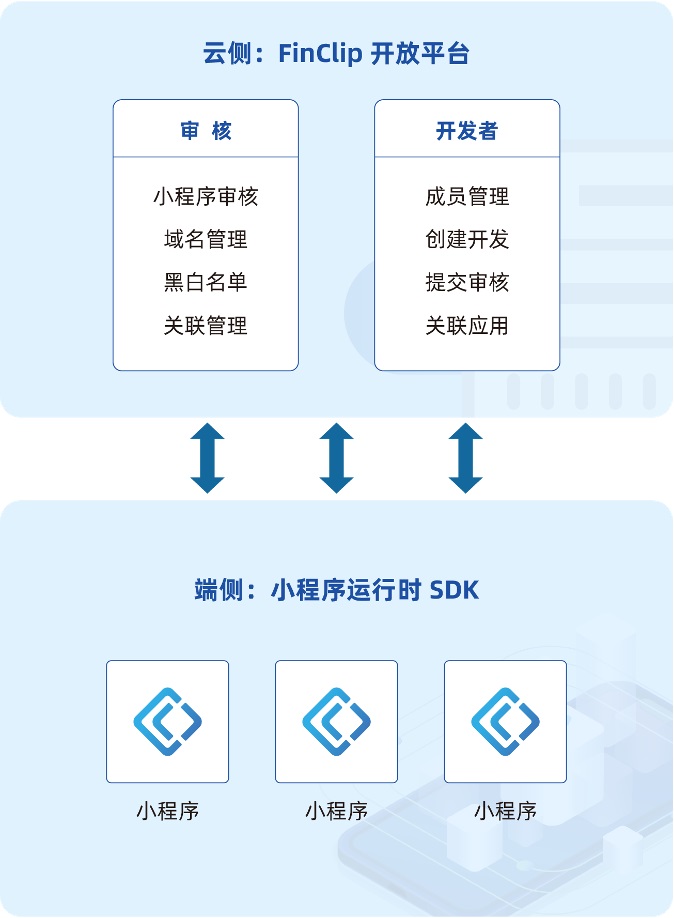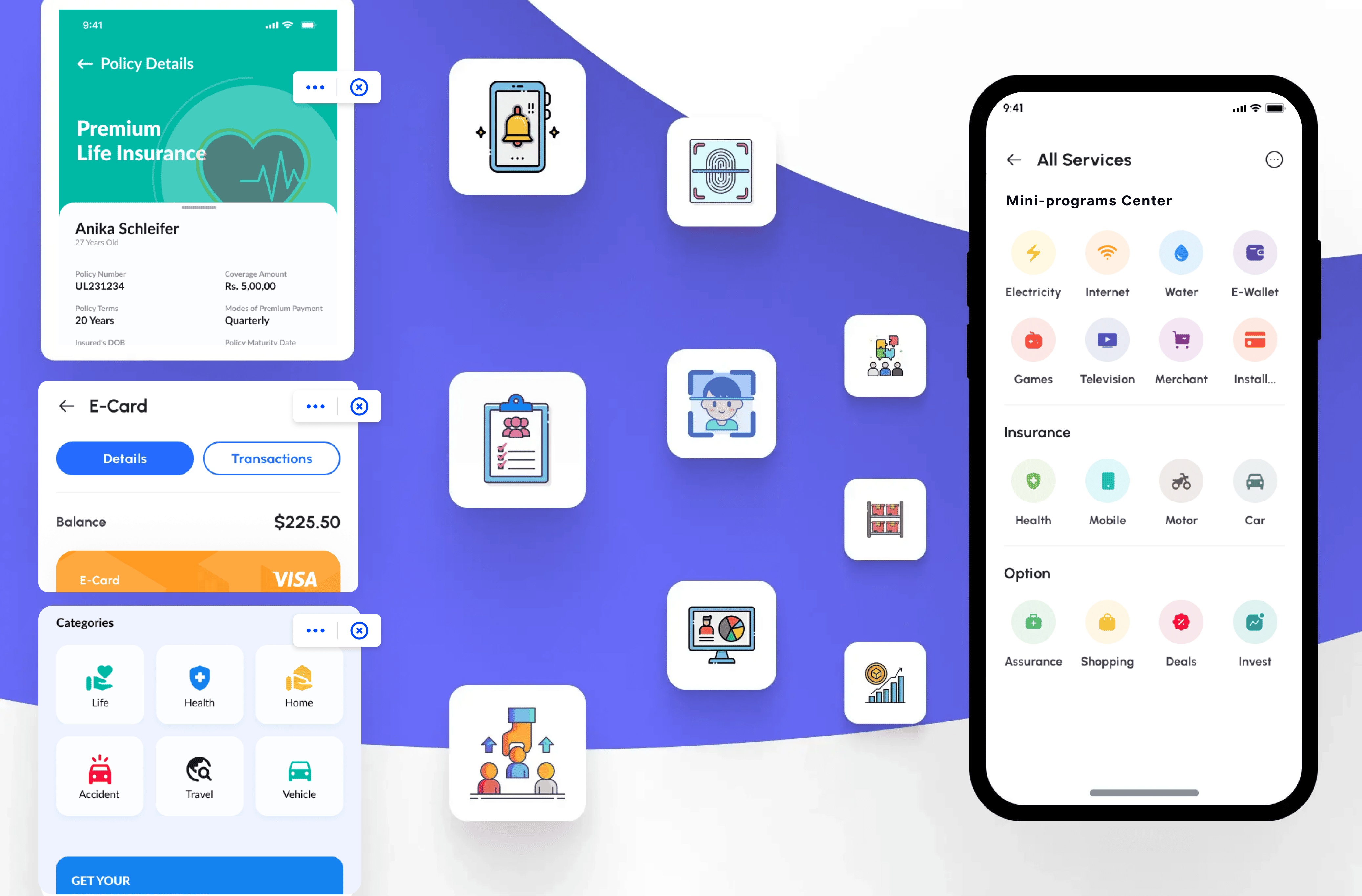What Is a Mini Program Container? Elegant Solutions to Mobile Application Challenges
This article will help you thoroughly understand the Mini Program container and where it can bring the most value.
What is a Mini Program Container
How to Understand a Container
The term "container" comes from the English word "Container", which translates to "freight container". But why are containers likened to freight containers?

Firstly, from an appearance perspective, neatly arranged freight containers are identical in both size and materials (even my OCD is cured), much like a factory having a large machine that can quickly mass-produce identical containers by just inputting the raw materials.
Secondly, the role of the container is to package and isolate the merchant's goods. Typically, different merchants' goods are packed into different containers, making loading and unloading less confusing.
Additionally, there is an even more important function of the container: protecting the cargo inside. Regardless of severe storms or intense sunlight during sea transport, we can be confident about the safety of the cargo inside.
We also hope that containers can achieve the same effect: as long as the raw materials (images) we provide are the same, the results (running instances) will be identical and can achieve packaging isolation and easy transportation.
Advantages of Front-end Containers
By comparing containers to freight containers, we can clearly summarize the advantages of containers: "The raw materials (images) provided are identical, the results (running instances) are identical", "packaging isolation", "easy transportation", etc.
The services running within the container or the multiple processes corresponding to the service should be the corresponding cargo within the container. Naturally, the purpose of the container is to provide an independent operating environment for the set of processes.
So how exactly should we achieve an "independent operating environment"?
File System Isolation
Each container has an independent file system. Modifying the file system within a single container will not affect other containers.
Refer to the chroot command in Linux, which can turn a subdirectory into the root directory.
Resource Isolation
Use namespace to isolate process visibility and communication.
Use Cgroup to limit resource usage and set the amount of CPU and memory it can use.
In essence, a container is a process set with isolatable views, restrictable resources, and an independent file system. It isolates other system resources and has its own independent resource view. "View isolation" refers to seeing only certain processes and having an independent hostname. "Resource restriction" refers to limiting memory size, number of CPUs used, etc.
Advantages of Mini Program Containers Compared to H5 and Native
Domestically, the disruptor of the era is none other than the Mini Program.
With the launch of Mini Program platforms like WeChat, Alipay, Baidu, and Douyin, the Mini Program ecosystem has achieved unprecedented success. Is it possible to combine the Mini Program ecosystem with containers to form a Mini Program container?
A Mini Program container, as the name suggests, is an environment that hosts the running of Mini Programs. It can proactively intervene and extend capabilities to enrich functions, optimize performance, and enhance experience.
You might wonder, if H5 can achieve this, why bother with Mini Programs? Comparing Mini Programs with the more commonly used and touched "H5 mobile applications" and "mobile native applications", we find that Mini Programs have several distinct advantages.
Cross-platform capability, running the same code on multiple platforms like iOS and Android;
Far better experience than H5 (supports local caching, Webview, has a rich set of components and support libraries);
Access to more system permissions to complete more diverse product designs;
Avoids DOM leakage (doesn't use the common window object and document object);
Significantly reduced package size, saving bandwidth and storage;
Service is no longer constrained by release versions and supports hot updates.
The Value That Mini Program Containers Can Provide
In summary, Mini Program containers can help developers quickly optimize package size, save bandwidth and storage. Meanwhile, App service iterations are no longer constrained by release versions, allowing for quick releases and iterations. Moreover, based on a unified development standard, Mini Programs only need to be developed once to be deployed quickly across multiple platforms.
Multi-platform Deployment
Due to the normative and compatible syntax, you only need to develop a Mini Program once and it can be opened in different applications, naturally solving cross-platform issues. Additionally, through IDE tool debugging and adaptation, the Mini Program can be deployed to open platforms like WeChat, Alibaba, Baidu, ByteDance, etc., connecting to various traffic platforms and reaching a large number of users, meeting multi-platform traffic needs.
More Agile Iteration
For complex businesses like finance, social media, and e-commerce that have frequent iteration needs, a better approach is to transform these parts into Mini Programs. Through the launch and removal of Mini Programs within apps, you can achieve hot updates without waiting for the main app version release and frequent App Store reviews, meeting the fast-changing scenarios of complex businesses.
Building an Open Ecosystem Platform
For companies building their ecosystem, they can also introduce third-party sellers through the launch and removal of Mini Programs, creating their own light application distribution center (app store) within the app. This quickly covers various high-frequency Mini Program scenarios like catering, shopping, office collaboration, forming their open ecosystem platform like WeChat or Alipay.
How to Introduce a Mini Program Container
Mini Program containers are excellent, and many companies are developing them internally, although limited to their capabilities and internal use. For example, big companies like Tencent, Alibaba, ByteDance, and Baidu have their own Mini Program platforms but usually restrict them to internal usage.
The more common reality is that many companies want to use Mini Program containers but don't have the capacity to create one. So, what is the correct way to get a Mini Program container if you really need one?
This is where FinClip comes in, a solution that allows any app to run Mini Programs. By simply integrating its cross-platform SDK into your app, you can load and run external Mini Programs. Besides the SDK, it also provides a backend management system to manage Mini Program launches and removals, as well as collect and analyze Mini Program data.

End/Cloud Collaboration
From my experience with FinClip:
It follows WeChat Mini Program development standards and guidelines, making development much easier.
This means existing WeChat Mini Programs can be put directly into your app without changing a single line of code, maintaining the same running effect and eliminating the need for additional secondary development and modifications, greatly saving labor costs.
Developer's Gospel, Support for Multi-terminal Operation
Besides mobile terminals like iOS and Android, it also supports operating systems including Linux, Windows, macOS, and Kirin. This means Mini Programs can be used on PC, in-car devices, and smart TVs, showing great care in product development.
Provides IDE and Documentation with a Low Learning Curve
It provides a Mini Program IDE development tool, similar to the WeChat Mini Program development tool, with built-in debugging and real-device preview, making it simple and easy to use. You can use this IDE for secondary development of existing projects, expanding functions and interfaces, or starting from scratch to write a Mini Program.



